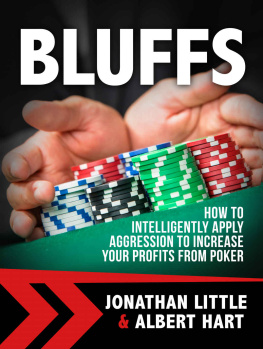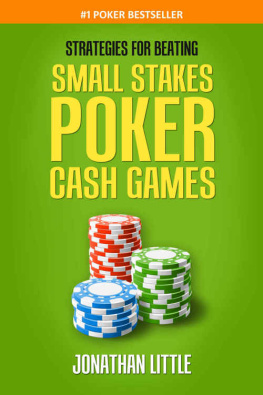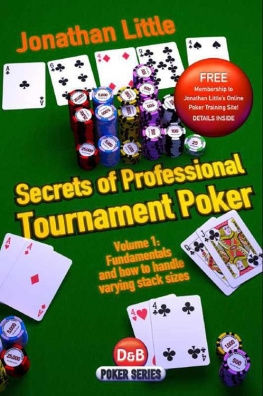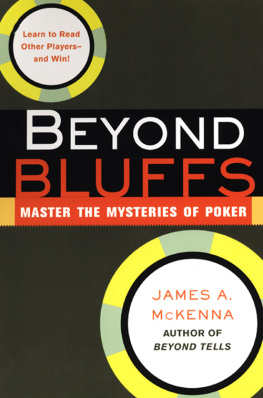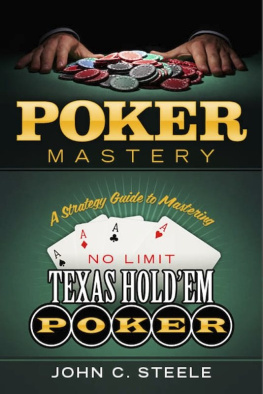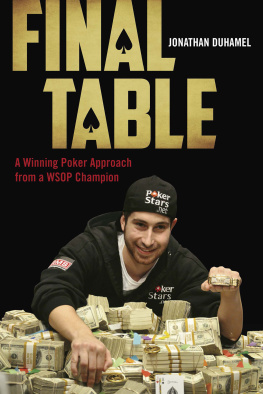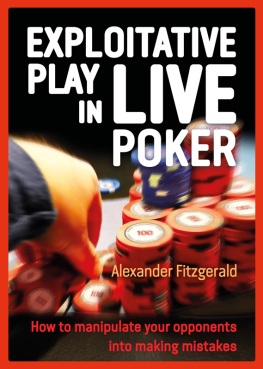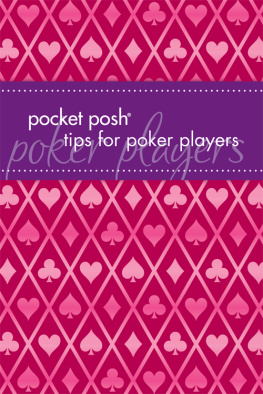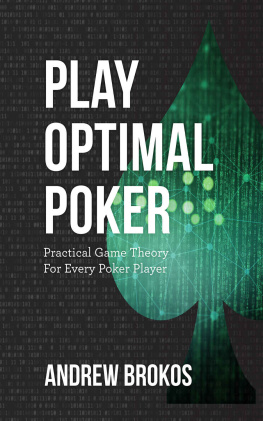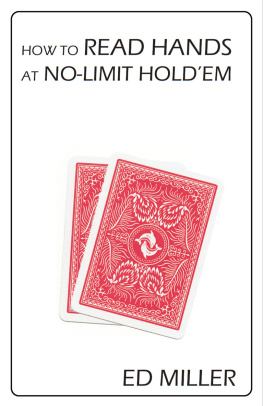Albert Hart, my student who provided many of the hand examples throughout Bluffs , put some of the ideas discussed to the test in a few recent online tournaments.
This 23-page PDF contains 15 of his hands, along with my analysis.
Introduction
The vast majority of poker players, especially those who frequent the small stakes cash games and tournaments, think the optimal winning strategy is rigid, tight, and aggressive. While winning most of the pots that belong to you, plus a few more when your opponents play poorly, is a nice way to keep variance low and to have an edge, your edge will consistently be small. If you are playing against players who are not world-class (you will rarely encounter a world-class player unless you play the highest stakes), you will win significantly more money by playing in a manner that exploits their suboptimal tendencies. This means getting maximum value from your premium hands, as many amateurs already know how to do, but also by stealing pots that do not belong to you. This book analyzes 18 bluffing situations that, if mastered, will drastically increase your win rate.
I do not want you to get the idea that playing in a generally tight, aggressive style is bad. The problem is that this straightforward strategy does not maximally exploit other tight, aggressive players. At this point in time, almost every poker player has studied one of the now-outdated books that advocate playing mostly premium hands. These players are excellent at being patient and getting paid off when they are fortunate enough to make the nuts versus weak players. These sporadic large wins are enough to beat the worst players in the small stakes games.
The goal of this book isnt to teach you to beat the worst players in the world (I already wrote two books on that topic, Strategies for Beating Small Stakes Poker Tournaments and Strategies for Beating Small Stakes Poker Cash Games ). Instead, it is to teach you how to beat the competent players you will encounter as you progress up the stakes.
As you move up, you will face fewer and fewer poor players, to the point that when you get to the medium and high stakes, there will rarely be an obviously terrible player at your table. Most middle and high stakes players strive to ensure they do not make the blunders that the worst players make. This tendency to avoid appearing dumb opens the door for you to steal pots when these tight, aggressive players have nothing, and occasionally when they have a strong hand but become convinced that you have the nuts.
The concepts explained in this book are effective against the tight, aggressive players and also against the strong players you will encounter. As you master these concepts, you will soon find yourself winning additional pots that many lesser players concede.
When looking at graphs of winning online poker players, the tracking programs display a green line (the total profit), a red line (the non-showdown winnings), and a blue line (the showdown winnings). Most winning small stakes players have a highly positive blue line (when they go to showdown) and a breakeven or negative red line (when they win by making their opponents fold). This implies that to beat the worst players, you simply play tight (giving up small pots and letting your red line go negative) and get paid off with your premium hands (making for a largely positive blue line). Those who win at the middle and high stakes games often have a similar, but inverse, graph, with a positive red line and a negative or break-even blue line. These players win by making their opponents fold incorrectly, meaning they successfully bluff more often! When they happen to play large pots, they will frequently be an underdog, but they will have stolen enough small pots to more than make up for their losses.
In general, you will find that each specific player has a point in the hand where they act in an honest manner. Some players play honestly as soon as they put a chip in the pot. They raise their strong hands, limp their medium hands, and fold their junk. Others raise preflop with all hands they deem respectable but then only continuation bet the flop when they have what they believe to be a strong holding. Many players in todays game continuation bet the flop with a wide range but then play the turn in an honest manner, only betting when they are confident they have the best hand, opting to check with their trash and marginal hands. More maniacal players are willing to play in an aggressive manner all the way to the river. You must diligently analyze your opponents tendencies so you know exactly when and where to apply pressure.
Use Aggression to Win More Pots
Do not be fooled into thinking that bluffing intelligently means constantly running insane plays such as 5-betting preflop with 7-2o or check-raising every street with nothing (as I am sure you have seen on television). These plays are spewy and completely unnecessary. This book will not teach you how to stroke your ego by playing in a blatantly bonkers manner.
The ultimate goal of this book is to equip you with a large toolbox of intelligent bluffs to choose from, which you can use to take advantage of your opponents. You want to put your opponents in difficult situations such that you force them to play honestly, allowing you to obtain clear information about their hands strength. Often, extreme aggression will force them to fold all but their best hands. You will find that many opponents will not be able to withstand significant pressure without a premium holding, assuming they do not think you are constantly out of line. It is tough to make a premium hand in no-limit holdem! While a few value betting strategies will be discussed in this book, I will mostly explain how to expand your betting and raising ranges to include more bluffs (primarily semi-bluffs), making you more difficult to play against.
Be aware that if you start playing in a more aggressive manner your opponents will eventually adjust, particularly if you play with the same players on a regular basis or if you play long sessions. As a result, some of these strategies will not work as well as when you initially started to implement them. Of course, if your opponents are convinced you are tight and passive, perhaps because you have played a tight, passive style for years, these plays will achieve a higher than normal success rate. Understanding how your opponents perceive you is vitally important.

